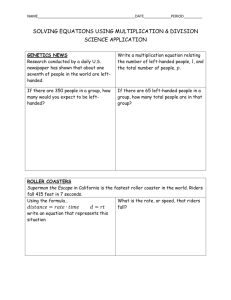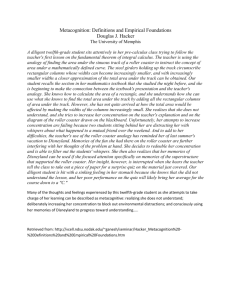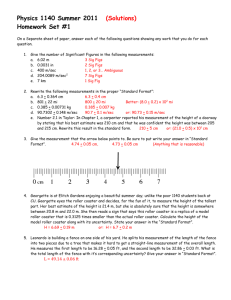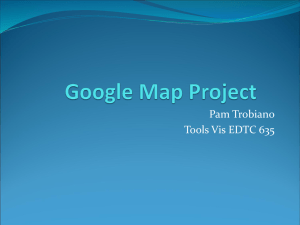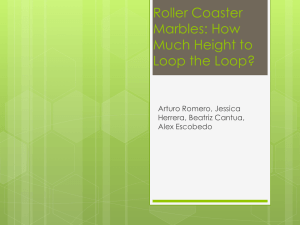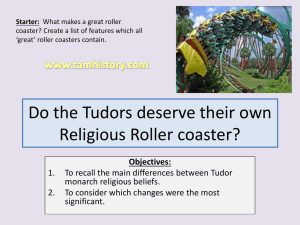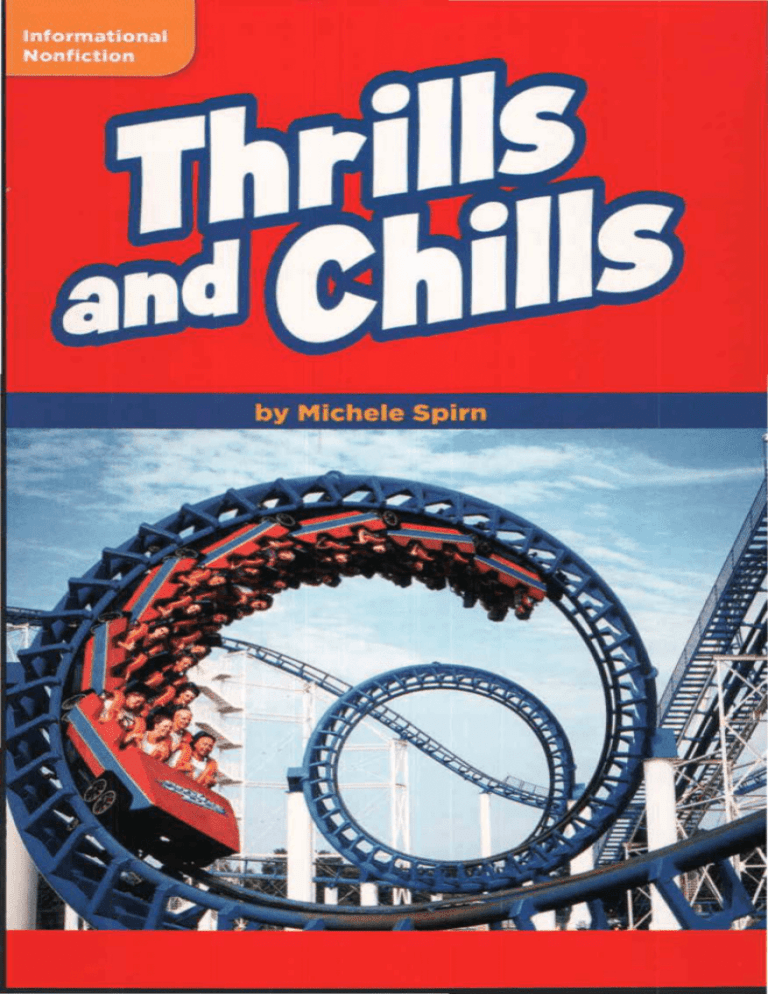
•
-
-
-
-
-
-
-
-
-
Read to
'
I
Fi:ndOut
I
I
Do you know
I
I
I
I
I
I
I
I
I
how roller
I
coasters work?
This book has
I
'
the facts.
•
-
-
-
-- --
..
-
-
I
.. -
photo credits 2-3: CC>Tommoso di Girolamo/
AGEforosroc . Ll: StopletQn ColleciiOn/Corb•s.
5 (t) CM.,roncol Pic ure Ard11ve/COR8fS. S.llf'IUI)
OChruti.,'s lmogesJsupei"S1oe1c:; (be) C 5quored/Geli 1
ll'llog� 7· Reproduced from rhe Collectlon' of rhe
library ol Congreu. 9• (b) CHoruyc•lu Yomogu 1111
COIIBIS; (tr) CMork Segolllnd ltSII:JCk 11· Clndeutock
13· (b) Oil<'rnd M llmoi\/Aiomy 14 Olmog Stol�
Royall
Comprehension
•
free/Aiomy CVR: OMor� Segol lln!fuSroek
TOC. Bernd M<!llman/Aiomy
illustration credits 4: (cr) Joe LeMonnier
12: (br) Jun Park
Strategy: Make Inferences and
Analyze
•
Skill: Evaluate Fact and Opinion
Vocabulary
•
I
I
•
STR ATEGIES & SKillS AT A G lANCE
artist's, existed, declared, powered,
pride
Vocabulary Strategy
•
Word Parts: Possessives
CONTENT-AREA VOCABUlARY
Words related to roller coasters
(see glossary)
NATIONAl CONTENT STANDARDS
Science
•
Physical Science
Word count: 815**
B
The McGraw·Hi/1 Companies
B Macmillan
tiM McGraw-Hill
Published by Macmillan/McGraw-Hill, of McGraw-Hill Education, a division of
The McGraw-Hill Companies, Inc., Two Penn Plaza, New York, New York 10121.
Copyright ©by Macmillan/McGraw-Hill. All rights reserved. No part of this publication
may be reproduced or distributed in any form or by any means, or stored in a database or
retrieval system, without the prior written consent of The McGraw-Hill Companies, Inc.,
including, but not limited to, network storage or transmission, or broadcast for distance
learning.
Printed in the United States of America
2 3 4 5 6 7 8 9 BSF 10 09 08 07 06
**The total word count is based on words in the running text and headings only.
Numerals and words in captions, labels, diagrams, charts, and sidebars are not included.
by Michele Spirn
Table of Contents
lniPoduction
.
.
.
.
.
.
.
.
.
.
.
.
.
.
.
.
.
.
.
.
.
.
.
.
.
.
.
.
.
.
.
.
.
.
.
.
.
.
.
.
.
ChapteP I
How Did Roller Coasters Begin?
ChapleP2
How Do Roller Coasters Work?
Concl•sion
.
.
.
.
GlossaPy/IIMiex
.
.
.
.
.
.
.
.
.
.
.
.
.
.
.
.
.
.
.
.
.
.
.
.
.
.
.
.
.
.
.
.
.
.
.
.
.
.
.
.
.
.
.
.
.
.
.
.
.
.
.
.
.
.
.
.
.
.
.
.
.
.
Comprehension Check
2
4
10
14
15
16
lnt..oduction
You grab onto the cold metal bar. You
ride up to the highest point. You feel like
something is pushing you backwards. You
get to the top and stare down. You gasp.
It's a big drop. Your stomach twists and
turns. There's no time to think about it.
Down, down, down you go, screaming
all the way. Your heart is still beating as
you glide to a stop. You smile. You made
it! Now it's time to get off the roller
coaster.
Do you know who invented the roller
coaster? Did you ever wonder how it
works? How does a roller coaster
stay on its tracks and not fly off?
0 People of all ages
enjoy riding roller
coasters.
How Did Rolle .. Coaste..s
Begin?
Around the time the Pilgrims were
landing in the New World, the Russians
were building the first roller coaster.
They built huge wooden slides. Then they
poured water on them. In the cold winter,
the water turned to ice. Large sleds would
race down these icy slides.
0 People in Russia enjoyed their
huge slides.
Catherine II (1729-1796) was :)
a German princess before she
became Empress of Russia.
Over one hundred years later, Empress
Catherine the Great of Russia asked
workmen to build her a special slide. She
wanted one that could be used in the
summer. In 1784, they built one that could
be ridden on by a cart on wheels. Many
people think this was the first real roller
coaster.
An artist painted Empress Catherine's
slide. People said that the artist's work
was fit for a queen.
5
The first American roller coaster was
built in the mountains of Pennsylvania. It
was called the Mauch Chunk Switchback
Railway. It was more like a train than
a roller coaster. When it was first built
in 182 7, it was used to carry coal. Then,
in 1873, people began riding the train
for fun.
o The railway carried
2,322 feet
35,000 people a year down
(708 m) of track. Riders had a great
view of the surrounding river and
mountains.
0 So me riders sat sideways
in Tho mpson's roller coaster.
This
gave the m a
better view.
In 1884 another roller coaster was
invented. It rolled six miles an hour
(9.6 k/h) down a track 650 feet (198 m)
long. This is about the speed of a very
fast bicycle ride. In those days, people
who rode it felt like they were racing.
This roller coaster was in an amusement
park in Coney Island, New York. It cost
one nickel to ride it. It was invented by
LaMarcus Adna Thompson.
7
Today, there are about 1,850 roller
coasters around the world. North America
has over 700.
Roller coasters keep getting bigger.
In
2003 an amusement park in Ohio declared
it had the world's tallest and fastest roller
coaster. It is called the Top Thrill Dragster.
By the time you read this an even
bigger and faster roller coaster may exist.
Plans are being made for a new "rocket
coaster," 456 feet (139 m) high and able
to run 128 miles per hour (206 k/h).
Fastest Roller Coasters
Roller Coaster
Top Thrill
Dragster
Dodonpa
120 mph
Cedar Point
(193k/h)
Sandusky, Ohio
106.8mph
Fujikyu Highland
(172k/h)
Fuji-Yosida, Japan
Steel
95 mph
Nagashima
Dragon 2000
(153k/h)
Spa Land, Japan
Millennium
92mph
Force
(148k/h)
85 mph
Goliath
(137k/h)
�I
-
8
Location
Speed
Cedar Point
1 Sandusky, Ohio
I
Six Flags
Magic Mountain,
Valencia, California
B•iH for hn
In 1894, Paul
Boynton opened
the first modern
amusement park
in Chicago. It had
the first loop­
the-loop roller
coaster.
Japan's Dodonpa
1s an unusual roller
coaster. Each car
has a face painted
on it. The mouth on
each face is open. It
looks like the face is
screaming. The seats
are between the
mouth's teeth.
On the Dodonpa ::>
roller coaster,
you
down a 156-foot
drop.
speed
(47.5
:11 )
CHAPTER 2
How Do Rolle .. Coaste ..s
wo ..k?
How does a roller coaster work? An
engine does not power it. The first car
has a bar underneath. A moving chain
catches onto this bar and drags the
coaster up the hill.
Energy is stored in the car from the
pull up the hill. That's potential energy.
When the ride starts down the hill, the
stored energy drives the coaster. It moves
with kinetic energy along the track.
0 This is a diagram of a roller coaster ride.
10
Gravity, the pull between the coaster and
the earth, also drags the coaster down
the hill.
In 1938 a famous scientist, Albert
Einstein, found that no hill on a roller
coaster could be higher than the first hill,
the lift hill. If any of the other hills were
higher, the energy would not be balanced.
Most roller coasters will lose speed at
the end of the ride because friction builds
up. Friction is the rubbing of the wheels
against the track. This rubbing causes the
roller coaster to slow down.
Did Yoa K110w
•
•
•
The word energy
comes from a
Greek word that
means "activity."
C P
baseball player uses
bot11 ·potential and
ki netic energy
to throw a ball.
-
,,
Riding a roller coaster can be scary.
Sometimes it feels as if the roller coaster
might fly off the track. Why doesn't this
happen? Each roller coaster car has three
sets of wheels. One set of safety wheels
locks onto the track. These wheels grip
the rail. The car can't fly off. The roller
coaster also has a safety brake that is
powered by air pressure.
People who run amusement parks pride
themselves on making sure their roller
coasters are in good shape. Workers check
them every day. In the winter, most roller
coasters are taken apart. Broken parts
are fixed. Then the roller coasters are put
together again.
This diagram shows �
the different kinds
of wheels on a roller
coaster.
12
I
up-stop wheel
Staying Safe On a Rollel" Coastal"
Follow these rules for fun and safety.
•
Always follow the rules on the signs.
•
Always listen to the person in charge.
•
Never throw anything from the roller
coaster.
•
If you see someone doing something
dangerous, report it.
•
Never take off your seat belt or lap
bar during the ride.
•
Stay seated until you are told you
can get off the ride.
Conclusion
Roller coasters have existed for
hundreds of years. People enjoy getting
chills and thrills from riding them. Next
time you ride one, think about what roller
coasters were like long ago. Think about
the kinds of energy they use. Think about
how slow they once were compared to
how fast they are today. Roller coasters
are one great ride.
Roller coasters like:)
these are popular
rides in amusement
parks.
Glossary
air pressure (AYR PRESH-uhr) the force that
air puts on things (page 12)
balance (BAL-uhns) the condition in which
opposite sides or parts are the same weight,
amount, or force (page 11)
energy (EN-uhrj-ee) the capacity for doing
work or supplying power (page 10)
gravity (GRAV-i-tee) the force that pulls
things toward the center of the earth
(page 11)
kinetic (kuh-NE-tik) having to do with motion
(page 10)
track (TRAK) a set of rails on which trains
move (page 10)
Index
Catherine the Great, 5
Coney Island, 7
diagram, 10, 12
Dodonpa, 8, 9
Einstein, Albert, 11
safety, roller coaster,
12, 13
Thompson, LaMarcus
Adna, 7
Top Thrill Dragster, 8
Mauch Chunk
Switchback Railway, 6
15
Comprehension Check
Summarize
List the facts and opinions found in this
book. Remember, a fact is something that
can be proven. Use your list to summarize
the information in the book.
Think and Compare
1. Look at page 7. Name one opinion that
is expressed. Name one fact that is
stated. (Evaluate Fact and Opinion)
2. Which roller coaster would you
most like to ride? Why? (Apply)
3. Why are roller coasters popular
all over the world? (Evaluate)
16
Write
a
Poem
A poem is a good way to describe
how a roller coaster ride feels. Use some
of these words in a roller coaster poem:
up, down, thrill, chill, spill, speed and
scream. Illustrate your poem with
a drawing.
The Ferris Wheel
Find out who invented the Ferris wheel.
Where was the first Ferris wheel used?
How does it work? List five facts about the
Ferris wheel.
Five Facts About the Ferris Wheel
1.
2.
3.
¥.
5.
ISBN O·Oc·l9U7c·X
'l
7ll002l 'l2&72'l


